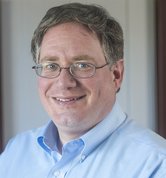Stand up for the facts!
Our only agenda is to publish the truth so you can be an informed participant in democracy.
We need your help.
I would like to contribute
One fuel bank up and running, another on the way
Largely out of the public eye, slow but tangible progress has been made on establishing new methods for curbing nuclear proliferation.
During the 2008 presidential campaign, Barack Obama said he would "work with other interested governments to establish a new international nuclear energy architecture -- including an international nuclear fuel bank, international nuclear fuel cycle centers, and reliable fuel supply assurances -- to meet growing demands for nuclear power without contributing to the proliferation of nuclear materials and fuel production facilities."
As we noted in our previous update, nuclear fuel banks are meant to encourage countries that don't have reliable supplies of enriched uranium and plutonium to get nuclear materials from other nations rather than building their own processing centers. This keeps the number of countries that have the ability to enrich uranium or re-purpose plutonium for making nuclear weapons relatively low, preventing proliferation.
Since our last update, significant progress has been made on the fuel bank idea.
One fuel bank -- established by the International Atomic Energy Agency and Russia -- became operational in December 2010. It is located near the city of Angarsk in Siberia.
Planning for a second bank is underway. It is to be located at one of several possible sites in Kazakhstan, with an opening date of 2013 projected earlier this year, though that could slip. This bank was first proposed to the IAEA by the non-profit Nuclear Threat Initiative and backed by a $50 million commitment from NTI advisor Warren Buffett. The bank has also received funding from the following governments: the United States, Norway, the United Arab Emirates, the European Union, and Kuwait.
Separately, in July 2011, the Nuclear Suppliers Group -- an alliance of nations working toward non-proliferation, including the U.S. and the other four original nuclear powers -- agreed to strengthen language about the transfer of sensitive technology for enrichment and reprocessing technology. The language now states that nations requesting nuclear technology must be in compliance with the Nuclear Non-Proliferation Treaty and must ratify an additional protocol under the authority of the IAEA or a regional agreement.
It remains to be seen whether such agreements, or fuel banks, will be successful in curbing the spread of nuclear materials that could be used in bomb-making. But the United States under Obama has advanced several elements of this promise. We rate it a Promise Kept.
Our Sources
Global Security Newswire, "IAEA, Kazakhstan to Discuss Fuel Bank Plan," Aug. 16, 2012
Global Security Newswire, "IAEA Fuel Bank Could Open in 2013," Feb. 8, 2012
Nuclear Threat Initiative, "From Theory to Reality: The Evolution of Multilateral Assurance of Nuclear Fuel," March 24, 2011
Nuclear Suppliers Group, membership list, accessed Nov. 21, 2012
Email interview with Matthew Bunn, an associate professor of public policy at Harvard University's Kennedy School of Government, Nov. 5, 2012
E-mail interview with Kingston Reif, director of nuclear non-proliferation at the Center for Arms Control and Non-Proliferation, Nov. 21, 2012
